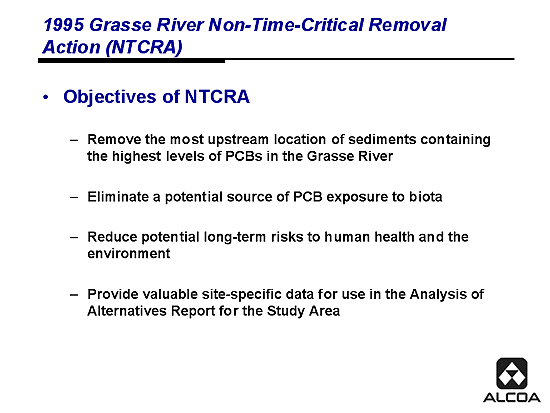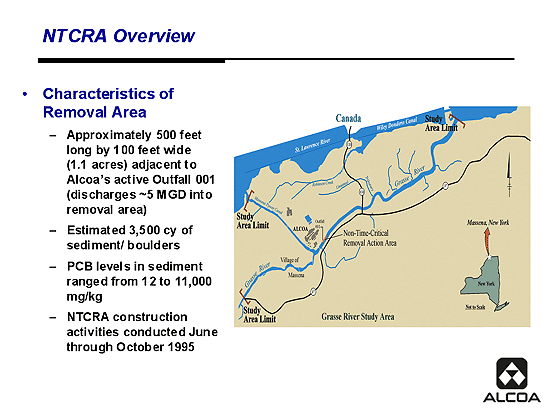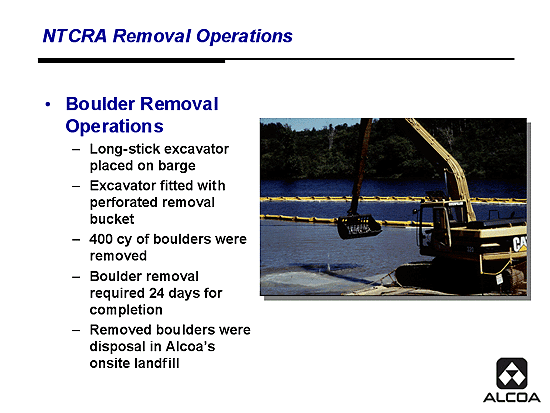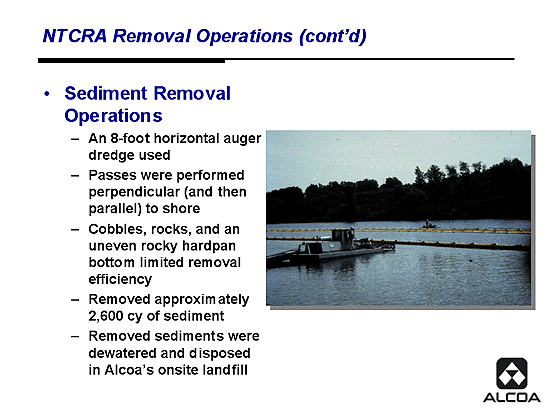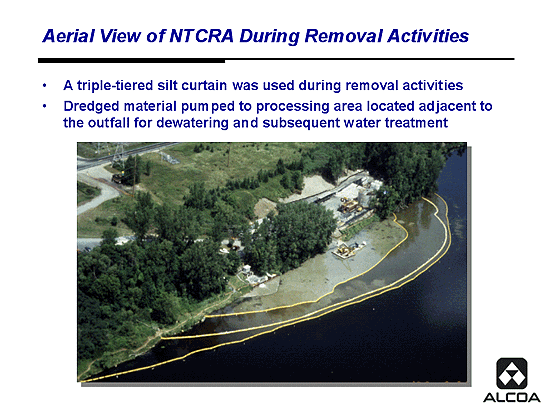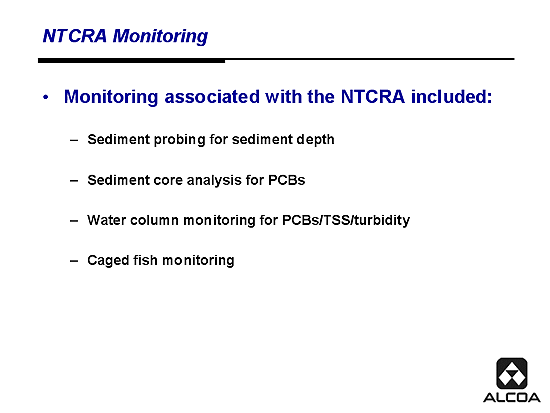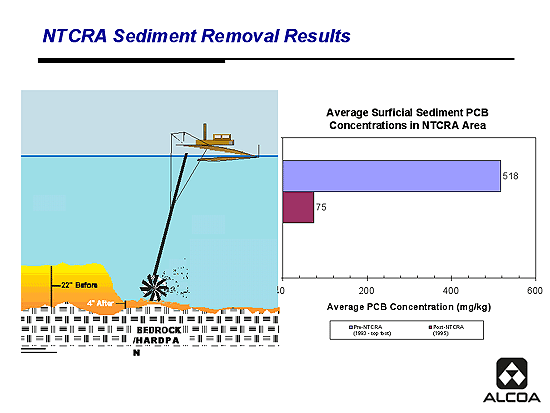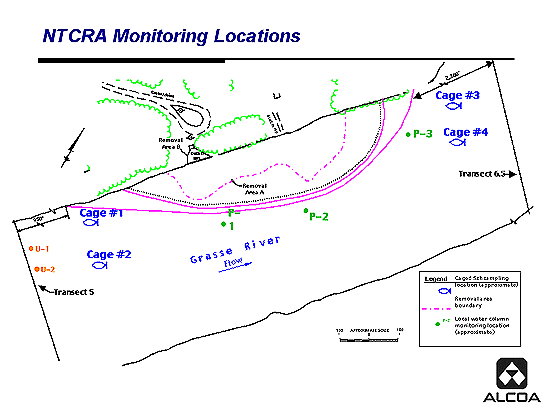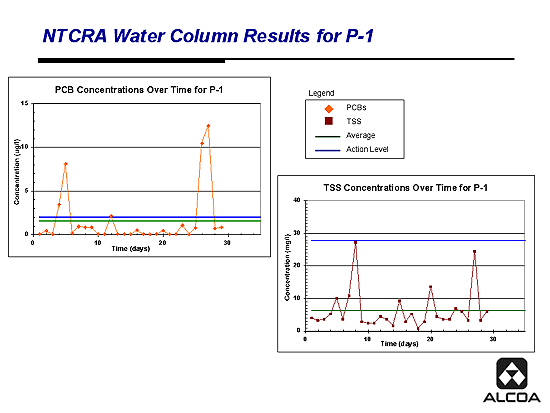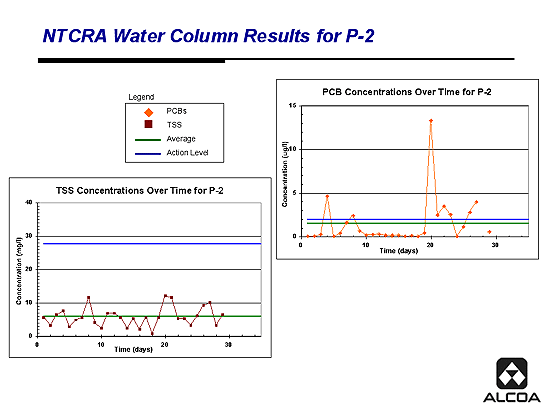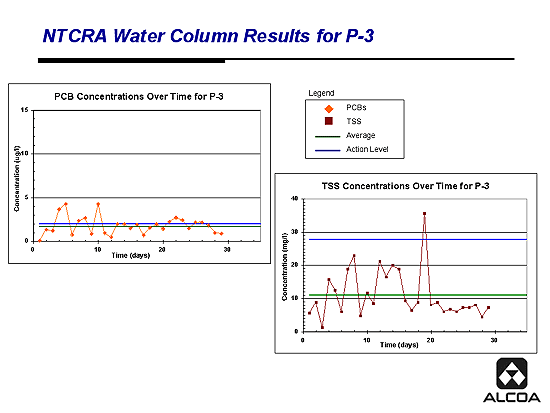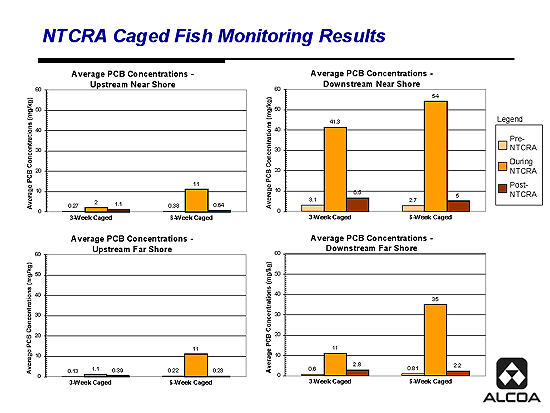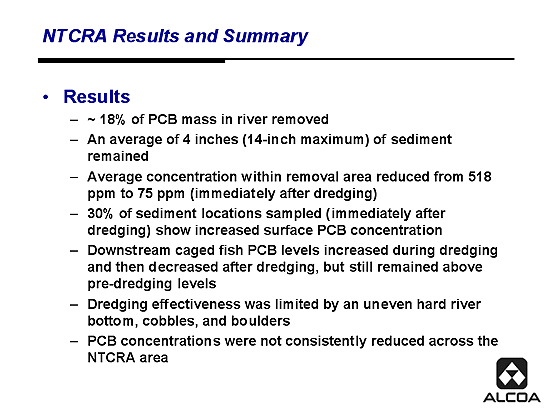Overview
A Non-Time-Critical Removal Action (NTCRA) was conducted by Arconic (formerly Alcoa) between July and September 1995 to address PCB-containing sediment in an approximate one-acre an area of the river adjacent to the Massena West Plant Outfall 001. The in-river area adjacent to Outfall 001 was the most upstream location of sediments containing the highest levels of PCBs in the Grasse River. A total of 2,600 cubic yards of sediment along with 400 cubic yards of boulders and debris were removed during the NTCRA. A horizontal hydraulic auger dredge was used to remove most of the sediments, and a hand-held dredge was used for a small area right next to the outfall. Boulders and debris were removed using a mechanical excavator.
During the NTCRA, it became apparent that it was not possible to remove all of the PCB-containing sediment as the bottom of the river contained cobbles and rocks which interfered with sediment removal. Based on the estimated sediment volume remaining in the dredged area (550 cubic yards), approximately 84 percent of the targeted sediment was removed during the NTCRA. Although care was taken to minimize impacts to the river from the dredging activities through the use of double (and, at times, triple) -tiered silt curtains, monitoring data indicated that some sediment and associated PCBs did escape the containment system and resulted in elevated levels of PCBs in caged fish downstream of the operation.
Pilot Study Locations
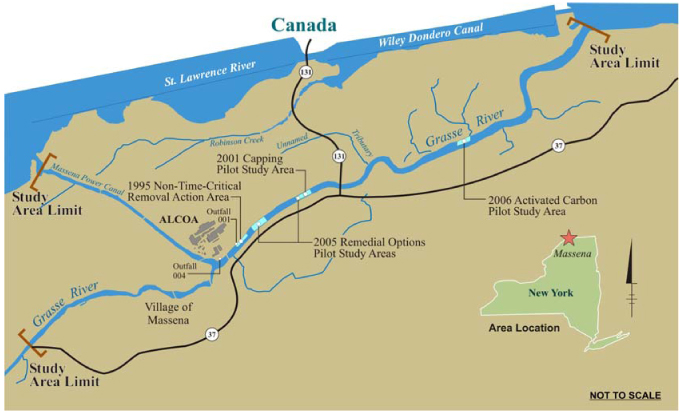
A non-time-critical removal action (NTCRA) is conducted at Superfund sites when the lead Agency determines, based on the site evaluation, that a removal action is appropriate and that a planning period of at least 6 months is available before the start of on-site activities. NTCRAs can address priority risks, allowing sites to move through the Superfund process more quickly.
Project Details
